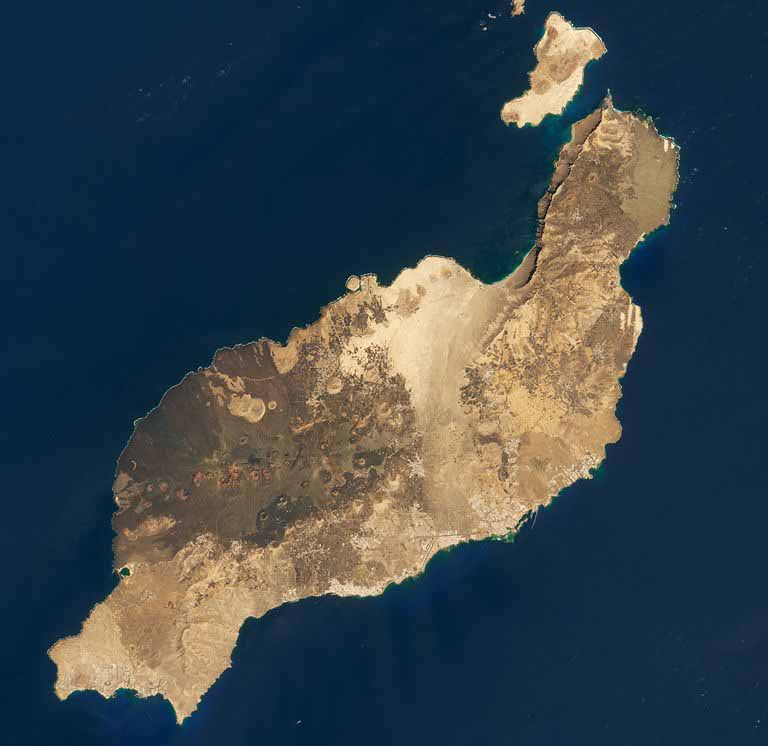Lanzarote
Lanzarote – In the years 1730 and 1824, two huge volcanic eruptions produced devastating effects on the island. The former gave rise to the imposing massif of the Montañas de Fuego of the Parque Nacional de Timanfaya, in the Yaiza municipality. The latter left a third of the surface area under a sea of larva.
These extensive petrified area, a lunar landscape with the craters and black soil of La Geria, with unwonted grape vines protected by white walls, together with the surrounding green waters identify the island. For many, it is the most beautiful of the entire archipelago, but in any case it is the most spectacular. If this is not enough, it is due to the local artist, César Manrique, that nowadays no work of man clashes with the extraordinary natural surroundings.
The capital, Arrecife, is a small city that was defended in the seventeenth century by the castle of San Gabriel, which was constructed on an islet that is joined to the city by a drawbridge. On highground close to the port is the Castle of San José, which was constructed in 1779 and houses the Museo lnternacional de Arte Contemporáneo.
Although Lanzarote does possess tourist beach areas such as the Costa Teguise, Playa Blanco and Puerto del Carmen, there are other places that are much stronger attention seekers. The Mirador del Río allows superb views of the cliffs, the Riscos de Famara, and also of the islands that immediately arise from the sea, La Graciosa, Montaña Clara and Alegranza.
The Jameos del Agua are galleries bored into the lava by volcanic activity, which have been conditioned by César Manrique. The result is a natural work of art that is surprising to the visitor.
There are several agreeable townships on the island, such as Haría, with its viewpoint that allows views of the Mil Palmeras valley, with the Corona volcano in the background and Teguise, the previous capital. The Castillo de Guanapay, which was built on the edge of a volcano in the sixteenth century, is very close to this village and it has a wonderful view.
The Cueva de los Verdes at the foot of the volcano “de La Corona” is a group of galleries superposed on several levels that extend for some 2 kilometres, forming a fantastic spectacle. They were used by the Guanches as refuges when attacked by pirates. The largest gallery is currently being used as an auditorium.



The Canary Island's two provinces - Gran Canaria - Tenerife

Las Palmas de Gran Canaria
Gran Canaria is the third largest and second most populous island of the Canary Islands,.

Santa Cruz de Tenerife
Tenerife is the largest and most populous island of the eight Canary Islands.
The information contained above is accurate at the time of uploading should ammendments need to take place, then this will be carried out on the next upload.
Photo Gallery: Lanzarote-UK
